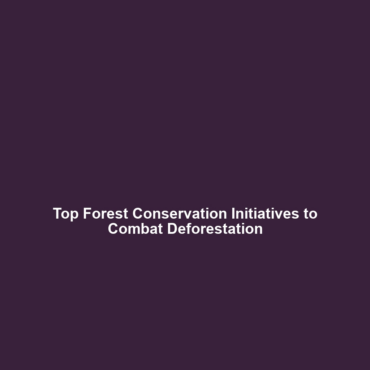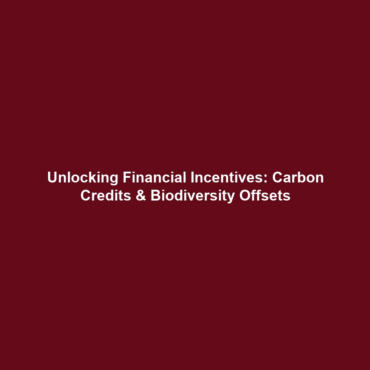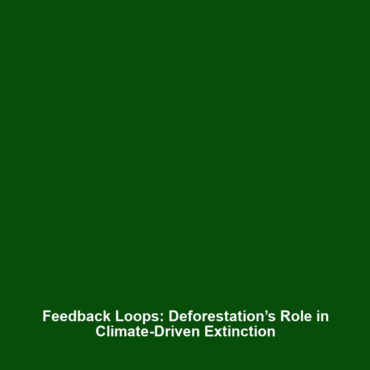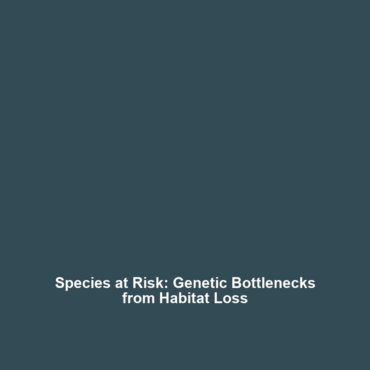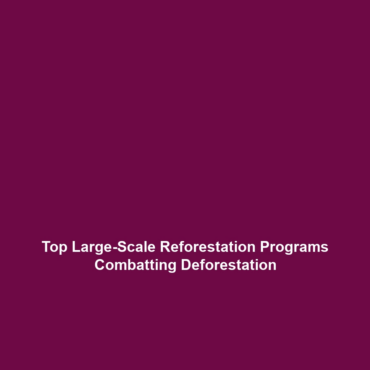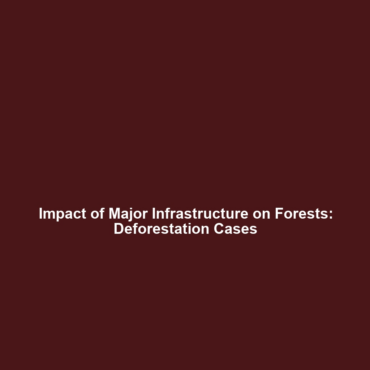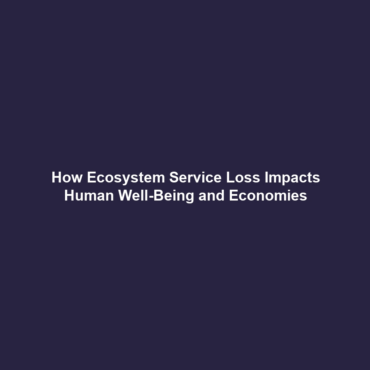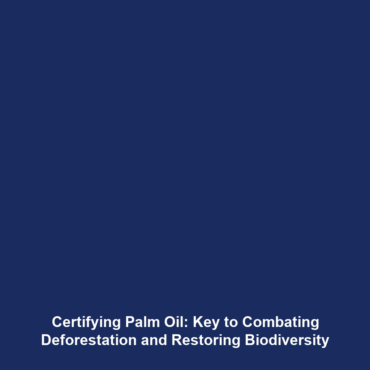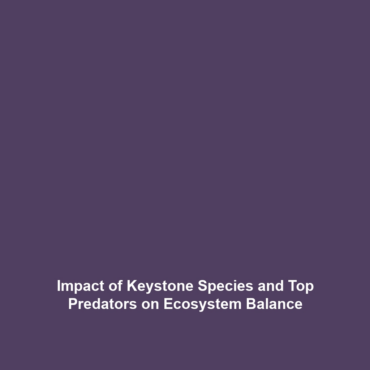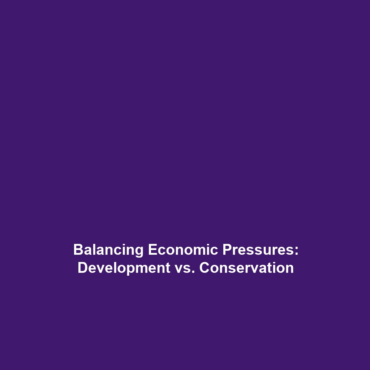Forest Conservation Initiatives: Protecting Remaining Forests
Introduction
Forest conservation initiatives are critical to protecting the world’s remaining forests, which play a vital role in maintaining biodiversity and regulating the Earth’s climate. As deforestation continues to threaten wildlife habitats and contribute to carbon emissions, these initiatives serve as a beacon of hope in the fight against biodiversity loss. By implementing effective conservation strategies, we can safeguard ecosystems, preserve species diversity, and enhance the resilience of forests against climate change. Understanding the significance of forest conservation within the broader context of deforestation and biodiversity loss is essential for promoting sustainable practices that benefit both the environment and humanity.
Key Concepts
Understanding Forest Conservation Initiatives
Forest conservation initiatives encompass a range of strategies designed to protect, restore, and sustainably manage forest ecosystems. Key concepts include:
- Sustainable Forestry: A practice that aims to meet society’s current needs for forest products without compromising the health of forest ecosystems.
- Protected Areas: Designated regions where natural habitats and wildlife are preserved, minimizing human impact.
- Reforestation: The intentional planting of trees in deforested areas to restore ecosystems.
- Biodiversity Conservation: Efforts aimed at protecting the variety of life in forest ecosystems, ensuring the survival of different species.
These concepts are integral to understanding the complexities of deforestation and biodiversity loss, highlighting the need for comprehensive approaches to conservation.
Applications and Real-World Uses
Forest conservation initiatives have several practical applications that exemplify their role in addressing deforestation and biodiversity loss:
- Sustainable Agriculture: Farmers are encouraged to adopt agroforestry techniques that integrate trees into agricultural landscapes, which improves soil health and provides habitat for wildlife.
- Community-Based Conservation: Involving local communities in conservation efforts, such as ecotourism, generates economic opportunities while promoting environmental stewardship.
- Corporate Sustainability Initiatives: Companies are increasingly adopting sustainable sourcing policies, reducing deforestation linked to supply chains for products like palm oil and timber.
These applications illustrate how forest conservation initiatives can be effectively implemented to mitigate the adverse impacts of deforestation.
Current Challenges
Despite the positive impacts of forest conservation initiatives, several challenges persist:
- Funding Constraints: Many conservation projects rely heavily on external funding, which can be inconsistent.
- Policy Barriers: Ineffective regulatory frameworks may hinder the enforcement of conservation strategies.
- Climate Change: The increasing frequency of extreme weather events challenges the resilience of conservation efforts.
- Illegal Logging: Ongoing illegal activities in forested areas disrupt conservation measures and contribute to biodiversity loss.
Addressing these challenges is crucial for enhancing the effectiveness of forest conservation initiatives.
Future Research and Innovations
The future of forest conservation initiatives looks promising, with ongoing research and technological innovations paving the way for more effective solutions. Notable advancements include:
- Remote Sensing Technology: Innovations in satellite imaging enable more precise tracking of deforestation and reforestation efforts.
- Biotechnology: Genetic research is helping to develop tree species that are more resilient to pests and climate stressors.
- Community Engagement Platforms: Digital tools that facilitate collaboration among communities, conservationists, and policymakers are on the rise.
These innovations will likely enhance the scalability and effectiveness of conservation initiatives in the coming years.
Conclusion
Forest conservation initiatives play a pivotal role in protecting remaining forests, which are essential for biodiversity and climate regulation. By understanding key concepts, exploring real-world applications, addressing current challenges, and embracing future innovations, we can significantly mitigate the impacts of deforestation and biodiversity loss. To support these critical efforts, consider engaging with local conservation groups or advocating for sustainable practices in your community. For further reading, check out our resources on sustainable agriculture and biodiversity conservation.
